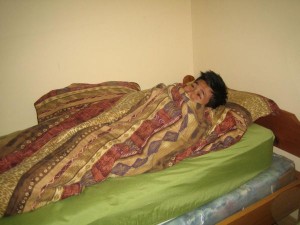The coldest season of the year in temperate climates is winter. It occurs between autumn and spring. Based on the weather, when the Northern Hemisphere is on winter, its Southern counterpart is on summer, the hottest season of the year. The opposite is true when the Northern Hemisphere is on summer. This is due to the axis of the earth being slightly tilted.
Common Injuries and Diseases during Winter
The cold weather and icy streets make individuals more susceptible to different injuries and diseases during winter. To learn how to treat and apply first aid to these wounds and illnesses, enroll in First Aid Courses. The following are some of the common injuries and diseases this season:
- Hypothermia
- Frostbite
- Slipping and falling injuries – increases chances of fractures
- Snowblindness
- Seasonal depression
- Shoveling
- Driving
- Burns
- Carbon monoxide poisoning
- Norovirus
- Painful joints
- Colds
- Sore throat
- Cold sores
- Raynaud’s Phenomenon

Winter Survival Kit
Every car should contain a winter survival kit, that is preferably replenished before the cold weather comes. This is particularly useful when individuals become stuck inside the car and under the snow. In cases of emergency, this can save the driver’s life and the lives of the passengers. The following are the recommended contents of the winter survival kit:
- Blanket
- Extra socks, mittens, sweaters
- Hand warmers
- Matches
- Light sticks
- Snow shovel
- Bottled water
- Snack bars, protein bars
- Flashlight with extra batteries
- Battery powered radio
- Flares
- Whistles, which can be useful when calling for help, and fluorescent distress flag
- First aid kit, complete with medications, all things necessary to clean wounds, pocket knife, etc.
Survival Tips for Winter
The following are survival tips that may be useful especially in extreme weathers, such as winter:
- Ensure that the vehicle has a gas tank that is at least half full at all times.
- Always tell another person one’s destination and route taking.
- If one is stuck, use the fluorescent flag on the antenna or hang it on the window. At night, keep the dome light on. Use emergency flashers only one hears a vehicle approaching to decrease battery drain.
- Stay in the vehicle at all times. It may become very dangerous to walk a storm.
- Avoid overexertion. This may lead to injuries, heart attack, or hypothermia, among others.
- Try to stay cold awake rather than warm and sleepy. Run the car engine for only ten minutes per hour.
- Do not expect to be comfortable.
Winter is a season when certain injuries and diseases become more common. Moreover, emergencies can occur at any time, thus it is necessary to have a winter survival kit prepared at all times.
Online Sources:
http://www.weather.com/life/safety/autosafety/article/winter-survival-kit_2011-10-30
